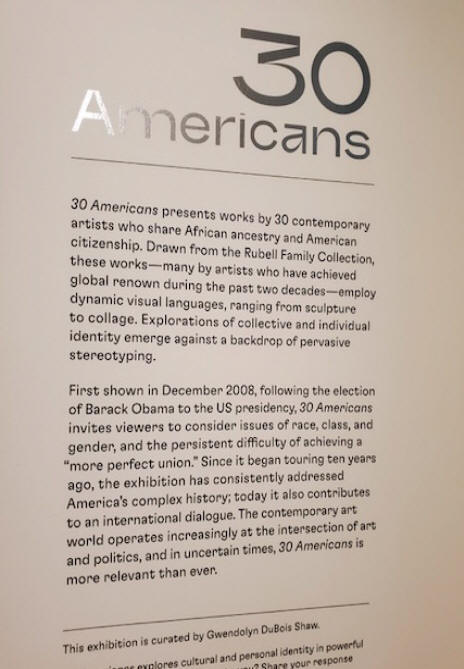
|
|
|
|
Whether your latest resolution was to spend more time
with your family or not, this column is for you.
Philadelphia was designated the nation’s first UNESCO
World Heritage City in 2015, placing it on par with
Berlin, Mexico City, Paris and Quebec City. It is widely
recognized as an international destination, a historic
and cultural mecca with venues that are accessible,
affordable and family friendly. #visitphilly Philly PHLASH is the best bargain in town. These
colorful buses travel to 18 attractions, departing
from a scheduled route, and two additional sites, Please
Touch Museum and the Philadelphia Zoo, after a PHLASH
transfer. Visitors can hop on and hop off, buses are
15-minutes apart, an all day pass is $5.00 and Seniors
are free with a Septa Key card. This is also a great way
to show guests the city. (note: No service from
Jan-March 28) RidePhillyPHLASH.com
Until January 12, 2020 “30 Americans’ is on view. The
exhibit explores race and gender through the artworks of
30 contemporary African American artists. Exhibited
artists include Jean-Michel Basquiat, Barkley L.
Hendricks and Kehinde Wiley.
www.barnesfoundation.org
The co-ed prison, then in the suburbs, was completed in
1829. The design, a central courtyard with 7
corridors and 2-story cellblocks arrayed around it. The
stone exterior’s walls were 20-inches thick. The prison
was equipped with central heating and toilets and
showers in each cell. Prisoners were isolated from each
other with their only personal property being a Bible.
They were fed and communicated through a hole in the
door.
Renee Gordon has written a weekly travel column for the Philadelphia Sun Newspaper for the past fifteen years and has published articles on local, national and international travel in numerous publications. Her columns focus on cultural, historic and heritage tourism and her areas of specialization are sites and attractions related to African American and African Diaspora history. Renee has been a guest radio commentator on various aspects of tourism and appeared in a documentary, "The Red Summer of 1919". As an educator for thirty years she was an English teacher, event and meeting planner, served as an educational consultant and intern-teacher mentor. She contributed to textbooks on women's history and classroom management and has facilitated workshops on both subjects. Renee considers herself a "missionary journalist" and as such she continues to promote heritage and sustainable tourism. 2013 Recipient of African Diaspora World Tourism Flame Keeper in Media Award for Travel Writing Affiliations
We'd love your comments!
|
Connect with us on:
American Roads and | |||||||
|
Public Disclosure--
Please Read The FTC has a law requiring web sites to let their readers know if any of the stories are "sponsored" or compensated. We also are to let readers know if any of our links are ads. Most are not. They are just a way to direct you to more information about the article where the link is placed. We also have several ads on our pages. They are clearly marked as ads. I think readers are smart enough to know an ad when they see one but to obey the letter of the law, I am putting this statement here to make sure everyone understands. American Roads and Global Highways may contain affiliate links or ads. Further, as their bios show, most of the feature writers are professional travel writers. As such we are frequently invited on press trips, also called fam trips. On these trips most of our lodging, dining, admissions fees and often plane fare are covered by the city or firm hosting the trip. It is an opportunity to visit places we might not otherwise be able to visit. However, no one tells us what to write about those places. All opinions are 100% those of the author of that feature column. |
||||||||
|
Privacy Policy/ Archives /
Contributors /
Subscribe to
American Roads Books by
Kathleen Walls /
Contact /
Sponsor or Advertise/ American Roads & Global Highways Home Page
|




















